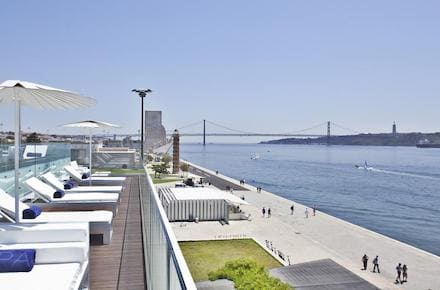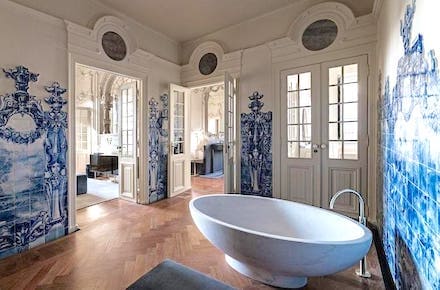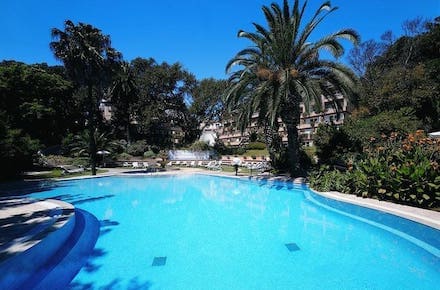Gothic
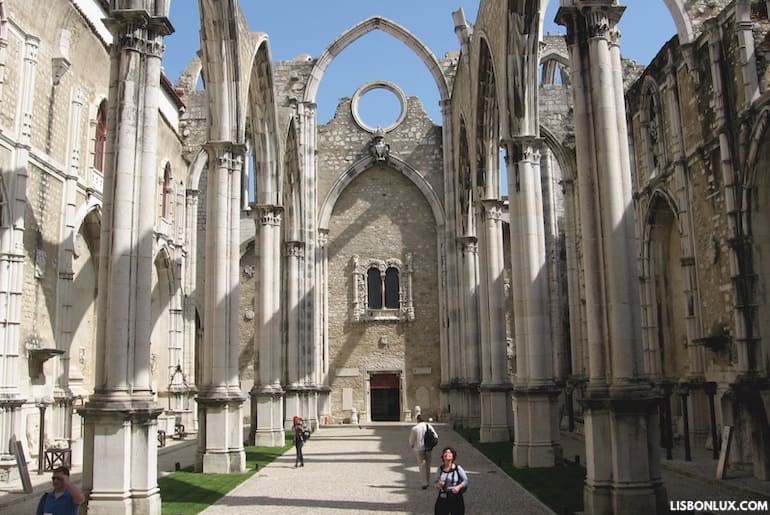
Carmo Convent
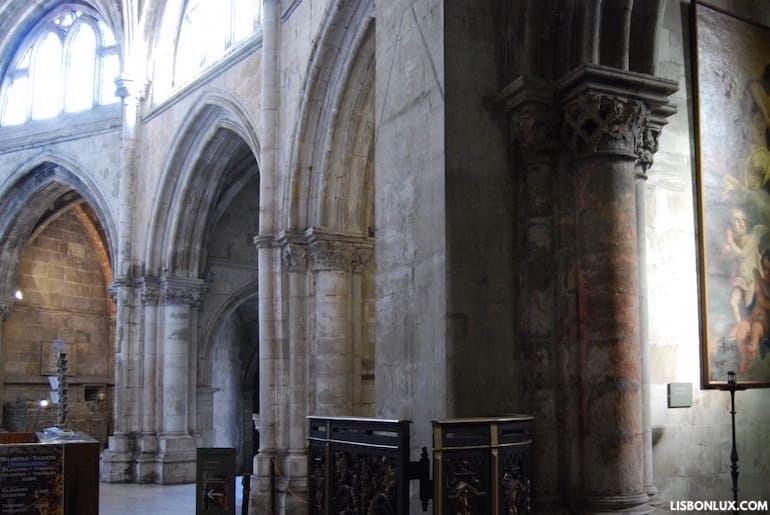
Lisbon Cathedral
Lisbon has few gothic monuments. The most notable example is Carmo Convent , a victim of the 1755 earthquake that's now a beautiful ruin. It remains the city's purest gothic construction, since others with gothic features, such as the cathedral , also incorporate earlier and later styles.
Manueline
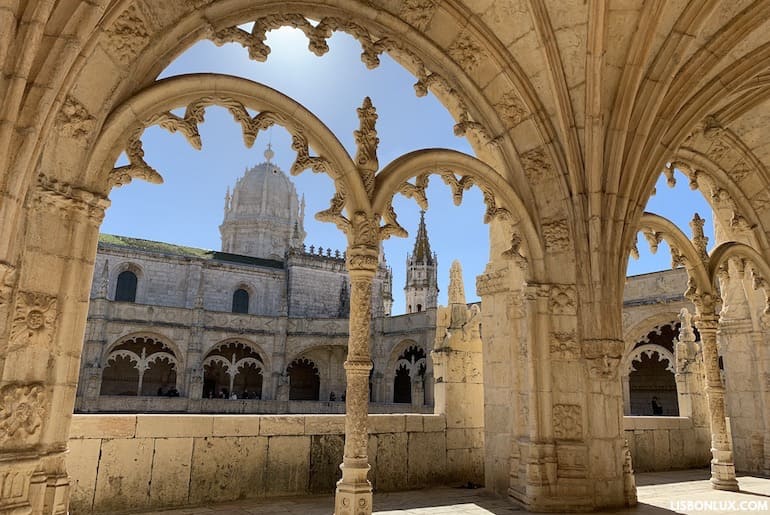
Jerónimos Monastery
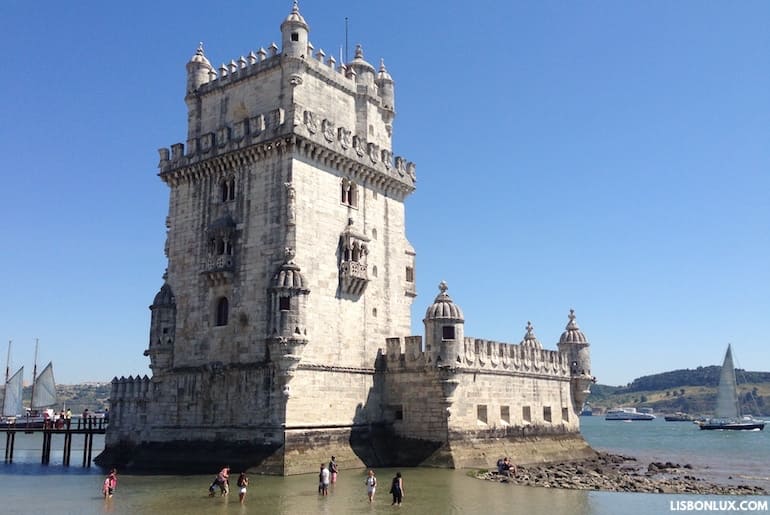
Belém Tower
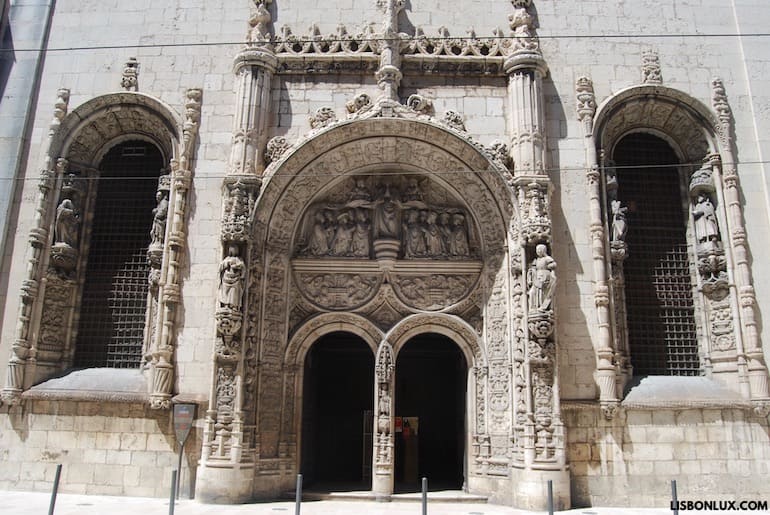
Conceição Velha Church
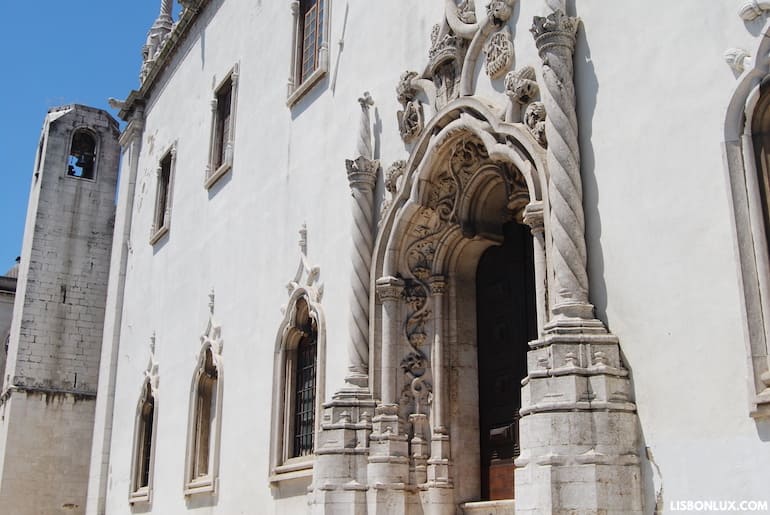
Madre de Deus Convent
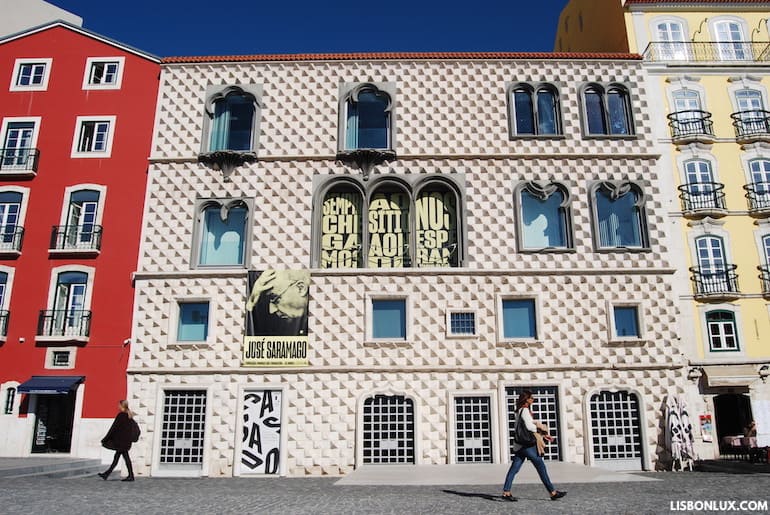
Casa dos Bicos
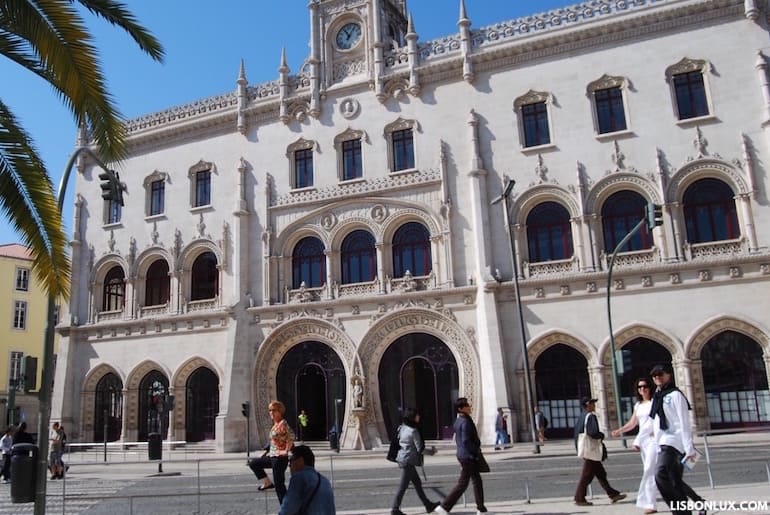
Rossio Station
This genuinely Portuguese style (named after King Manuel I) is a flamboyant late Gothic and a fabulous glorification of Portugal's achievements at sea. It uses seafaring imagery and extravagant forms depicting ropes, flora, the king's seal (a sphere with bands representing the equator and the tropics) and crosses.
The two most emblematic monuments of this style are the Jerónimos Monastery and Belém Tower , but there are other buildings in Lisbon featuring manueline portals and windows, such as the Madre de Deus Convent (now the Tile Museum ), Conceição Velha Church and Casa dos Bicos . An example of neo-manueline which emerged in the 19th century is Rossio Station .
Pombaline
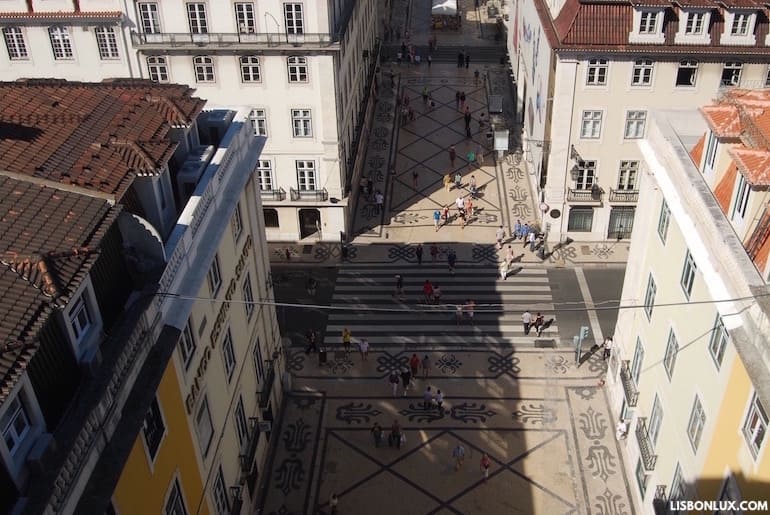
Rua Augusta
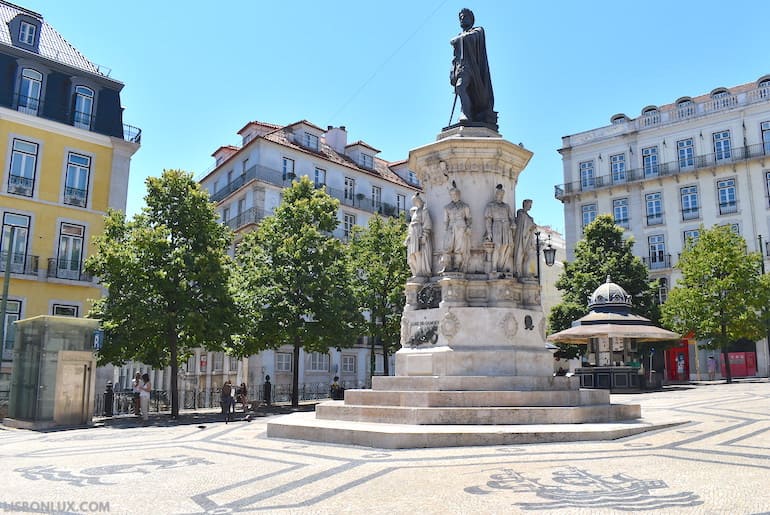
Praça Luís de Camões
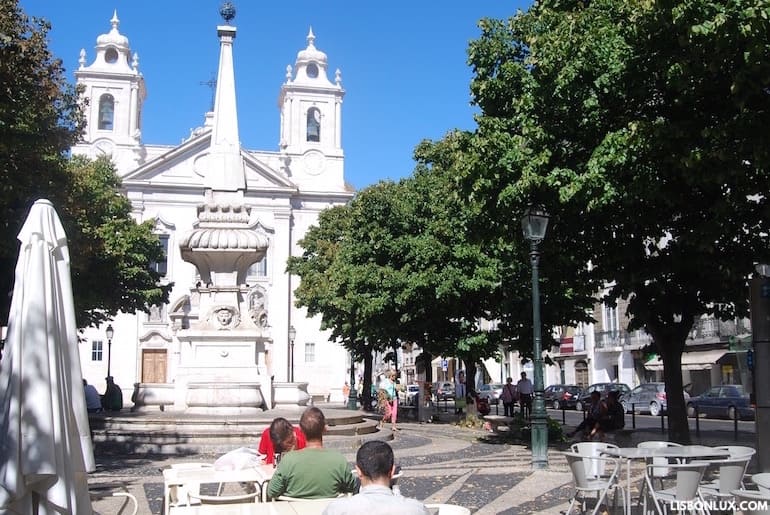
Praça de São Paulo
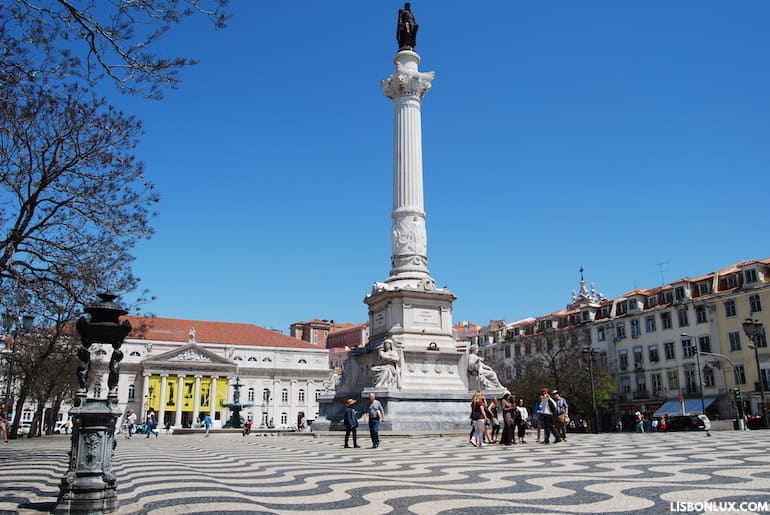
Rossio
The post-1755-earthquake reconstruction of Lisbon was done in a neoclassical style known as Pombaline, named after the Marquis of Pombal, who was responsible for the project.
It's a style with simple classic features and little exterior decoration (except for tiles added later), and using a "cage system" to make the buildings earthquake-proof.
The mainly four-story houses were equipped with modern sanitation, which further made this a state-of-the-art urban planning (and the first example of rationalist planning), as did the introduction of anti-seismic design and early prefabricated building methods.
Although the pombaline style is mostly seen in Lisbon, it was also used in many towns in southern Portugal and Brazil. However, downtown Lisbon is the Pombaline masterpiece, with its Rossio and São Paulo squares often regarded as the best examples.
Baroque
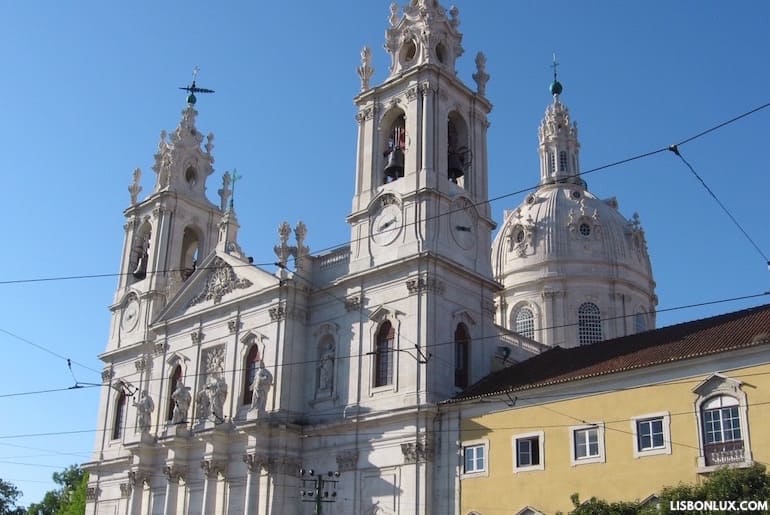
Basílica da Estrela
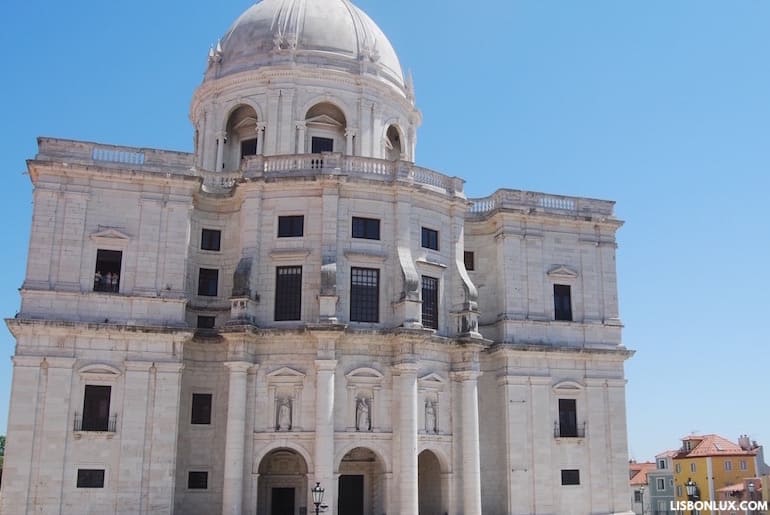
National Pantheon
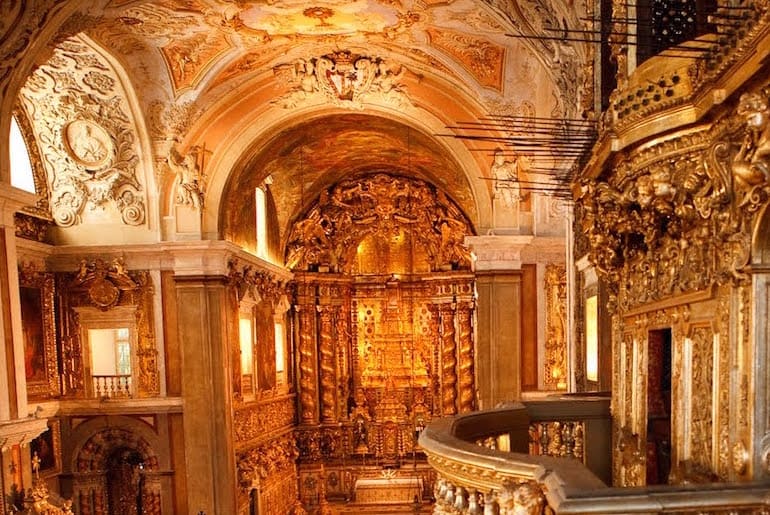
Santa Catarina Church
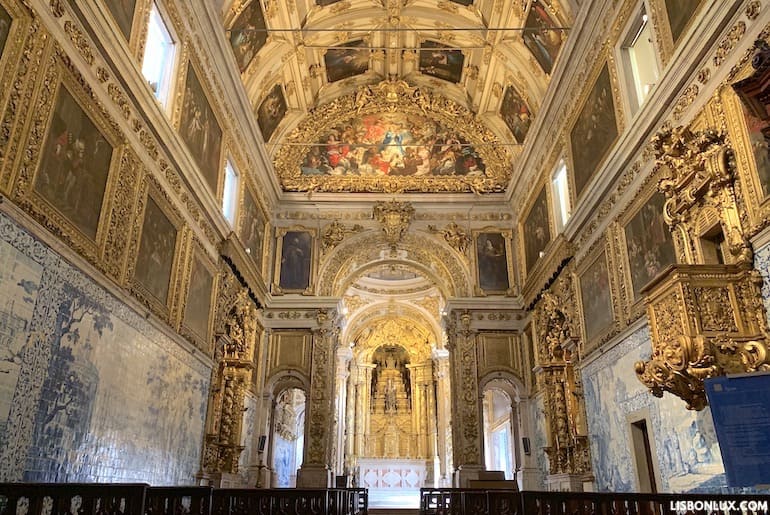
Madre Deus Church
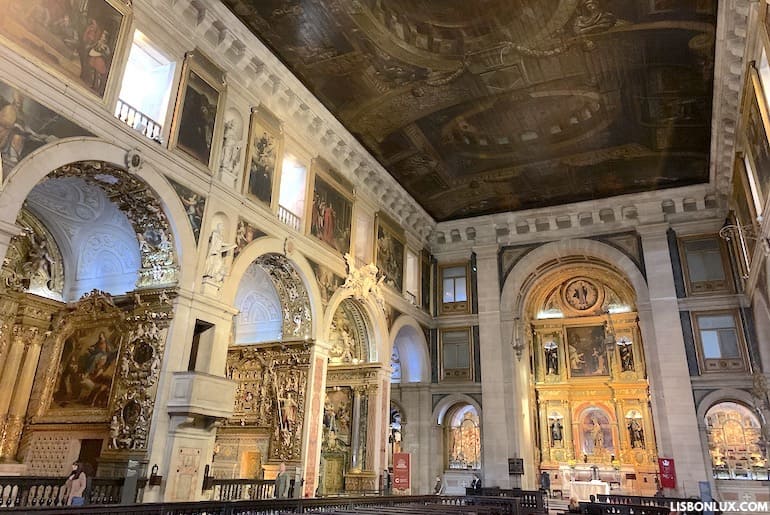
São Roque Church
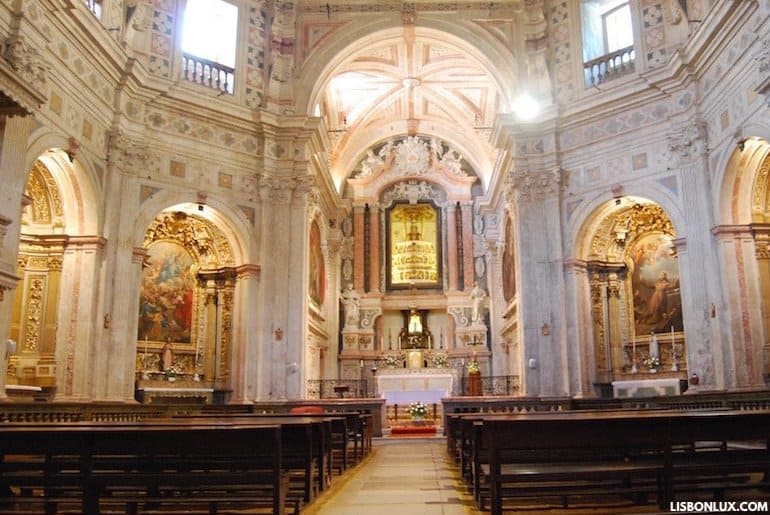
Menino Deus Church
The word "baroque" in most languages derives from the Portuguese "barroco." It emerged from the profusion of Brazilian gold and diamonds in the 18th century, leading to gilded ornamentations inside most of Portugal's (and Europe's) churches and palaces.
There are few purely baroque buildings in Lisbon, as it was a style often used to enrich older buildings, or had other styles mixed in reconstructions and renovations.
However, there are many monumental baroque interiors, such as that of São Roque Church , Estrela Basilica , Santa Catarina Church , the National Pantheon and Graça Church , among several other examples.
Neoclassical
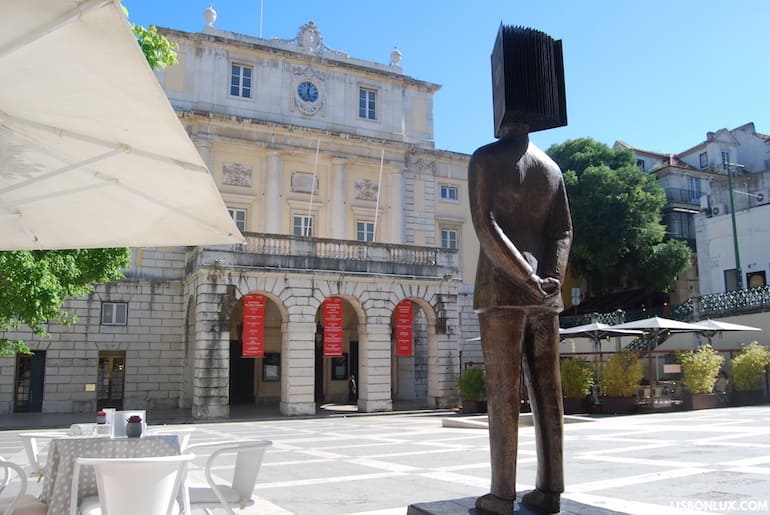
São Carlos Theater
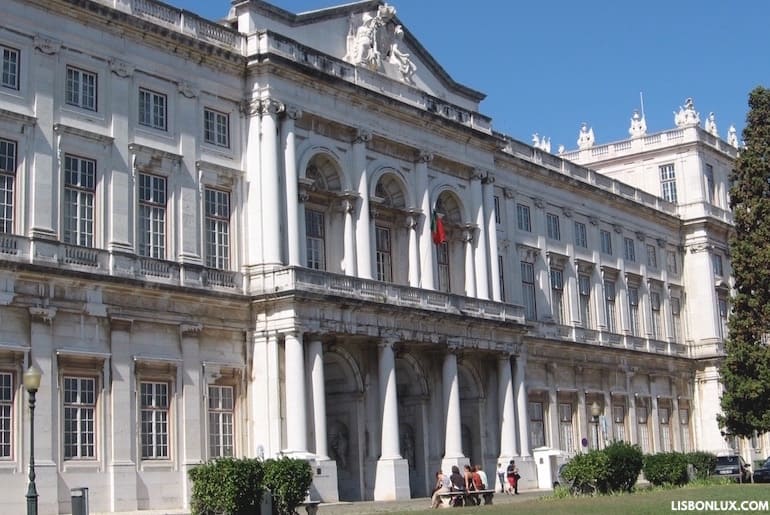
Ajuda Palace
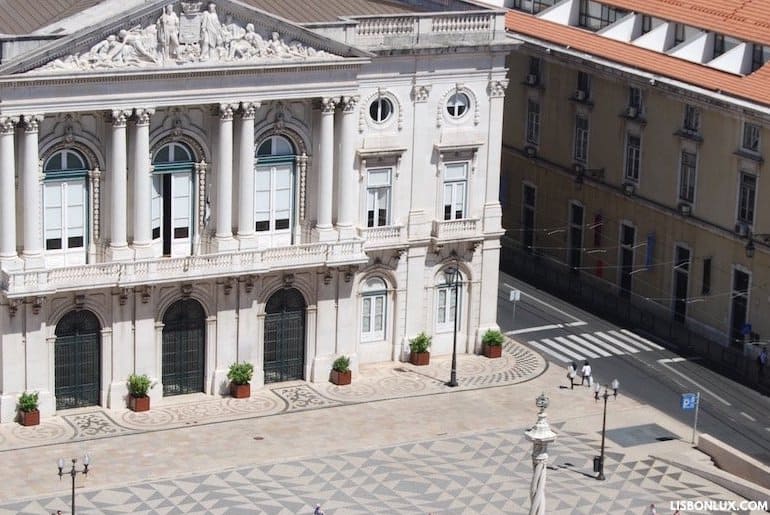
Municipal Palace/City Hall
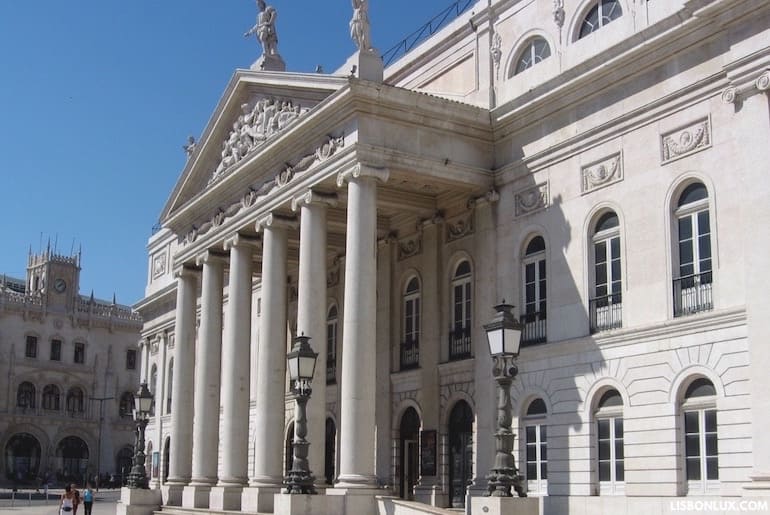
D. Maria II Theater
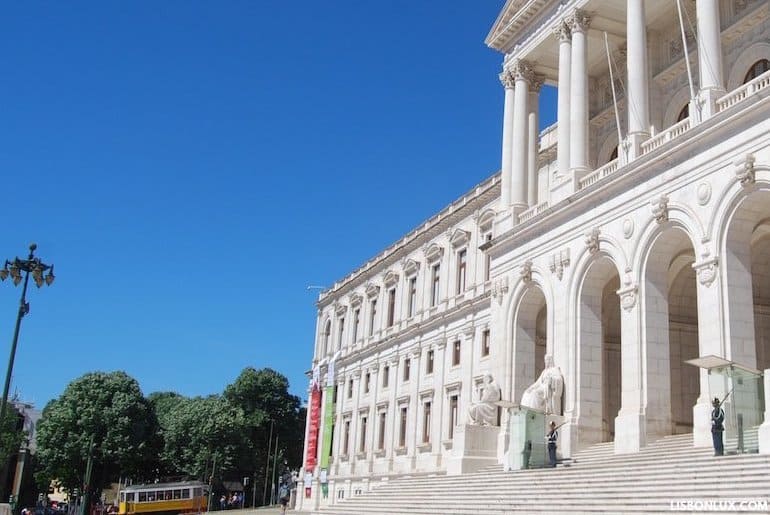
São Bento Palace
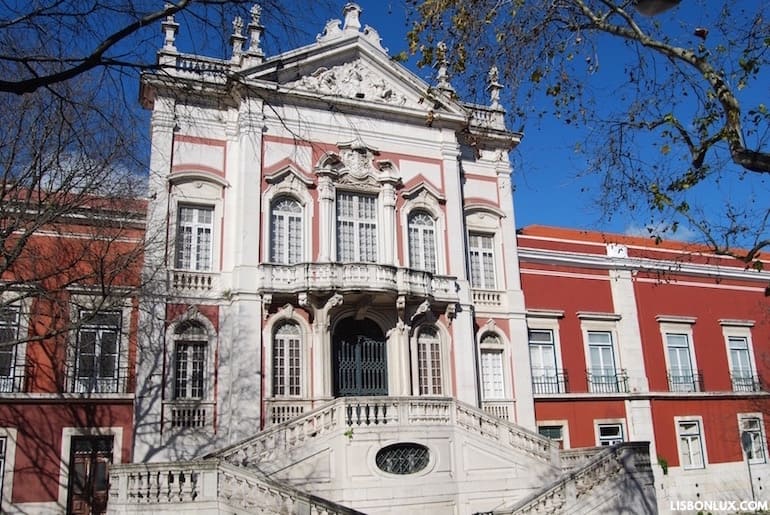
Bemposta Palace
While the Pombaline style arose from the need of functional architecture in a new Enlightened city, Lisbon's grandest buildings after the earthquake were given a more monumental neoclassical appearance. The first one was São Carlos Theater, then came Bemposta Palace, followed by Dona Maria II Theater, São Bento Palace , Municipal Palace , and Ajuda Palace .
Neo-Moorish
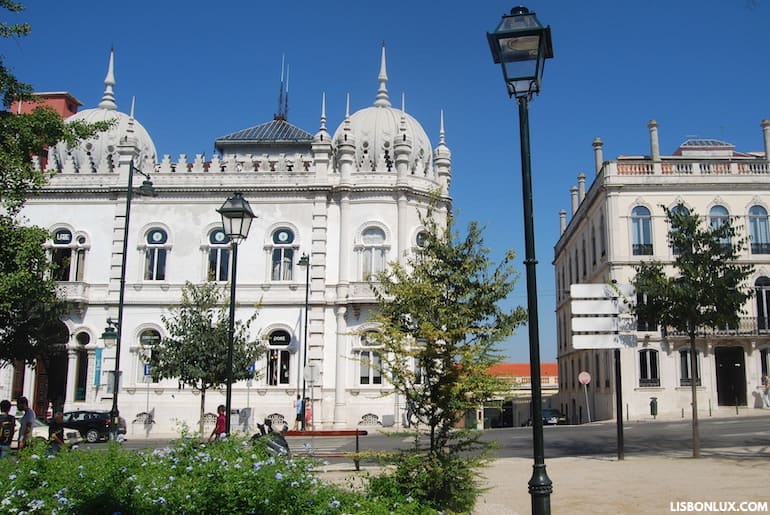
Ribeiro da Cunha Palace
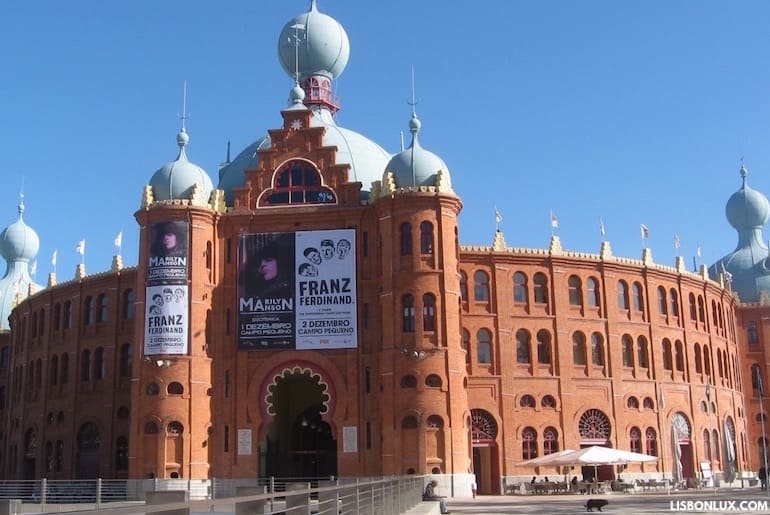
Campo Pequeno Arena
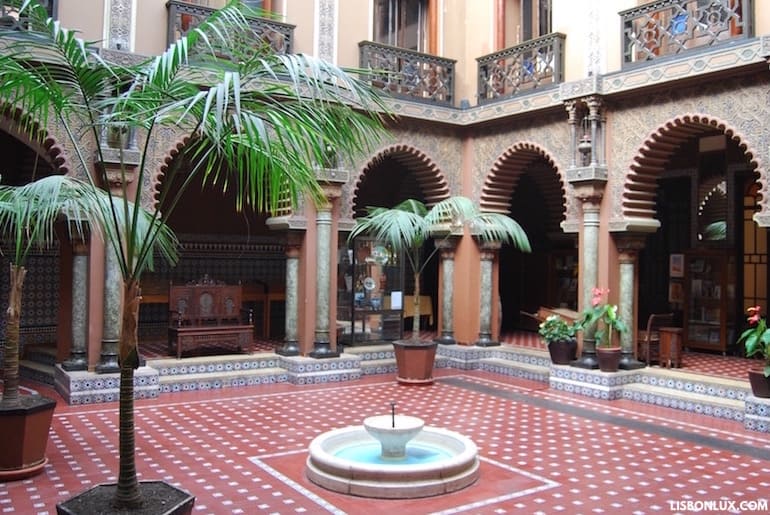
Casa do Alentejo
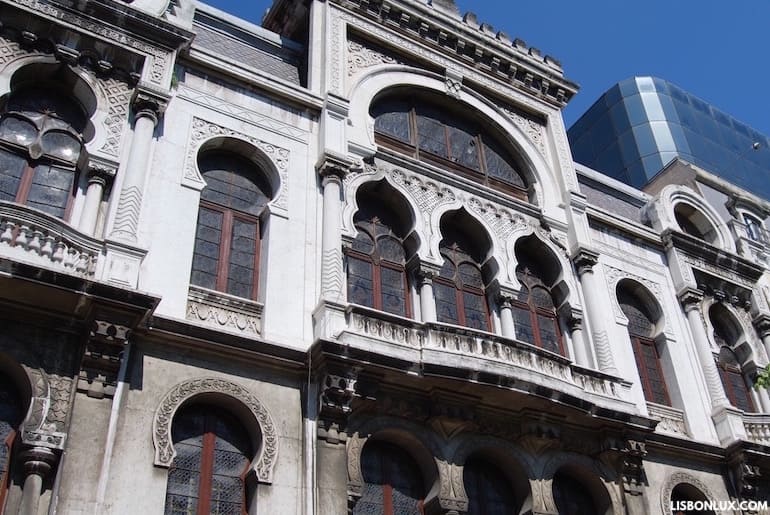
Conceição e Silva Mansion
Except for the castle , there are no Moorish buildings in Lisbon. However, in the romantic period of the 1800s, many new constructions showed Moorish inspiration. This neo-Moorish style can be seen in the Campo Pequeno arena, which just like most Iberian bullrings features Moorish domes and arches. Other examples are the courtyard of Casa do Alentejo and the Cinemateca atrium, as well as the Ribeiro da Cunha Palace and Palacete Conceição e Silva, a mansion on Avenida da Liberdade (number 226).
Art Nouveau and Art Déco
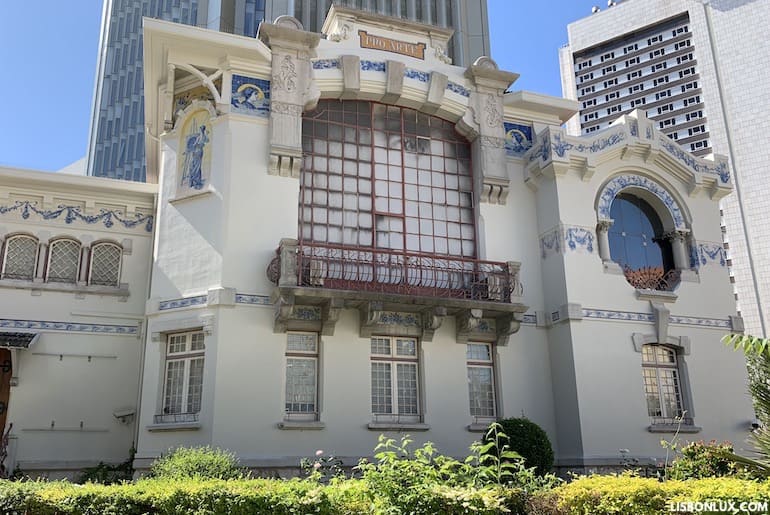
Anastácio Gonçalves Museum
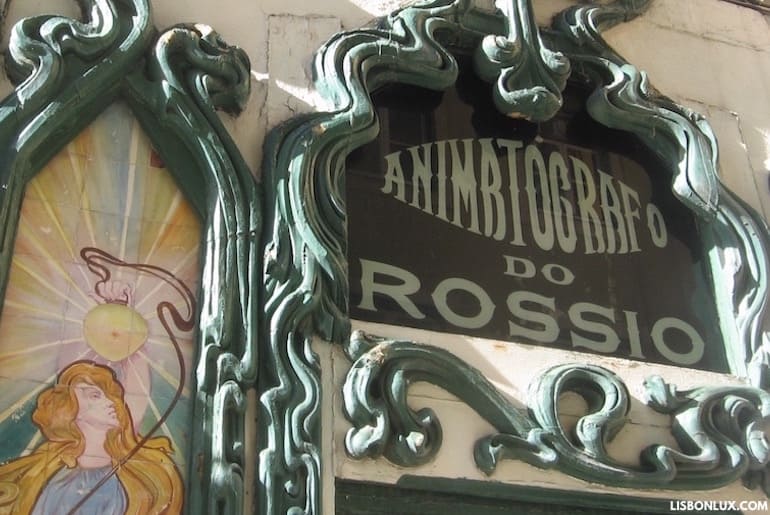
Animatógrafo do Rossio
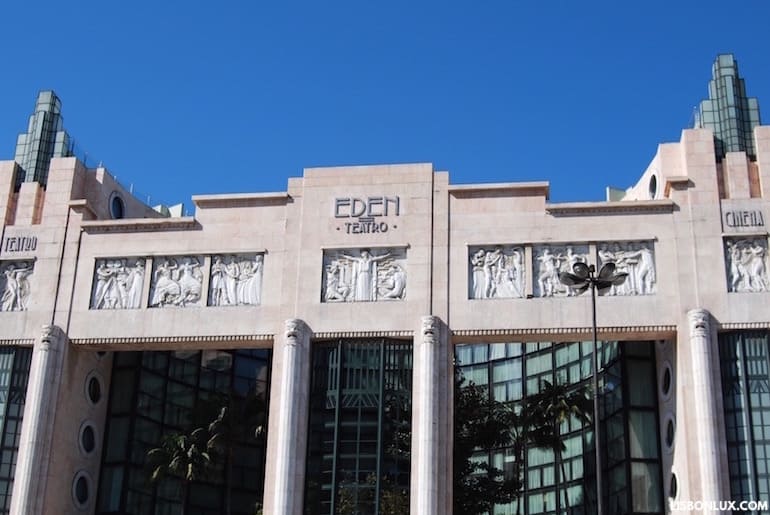
Eden Theater
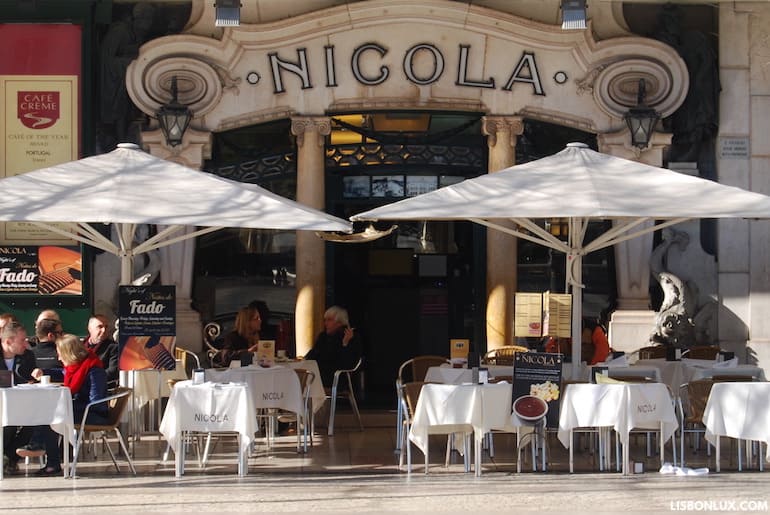
Nicola Café
The Baixa and Chiado districts are filled with charming Art Nouveau and Art Deco details, from store signs to tile decorations. Some examples include the famous Nicola Café, but there is also the former movie theater Animatógrafo do Rossio, the Internacional Design Hotel, Confeitaria Nacional, and the Grandella building (now an H&M store).
To the north, in the Avenidas Novas district, there's the beautiful façade of the Anastácio Gonçalves Museum .
Two Art Déco buildings are now hotels, Teatro Eden (VIP Eden Hotel) and Britânia Hotel.
Contemporary
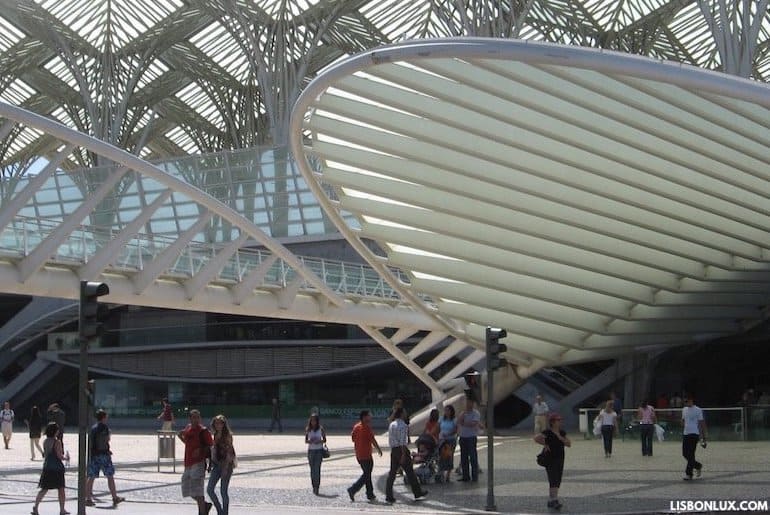
Oriente Station
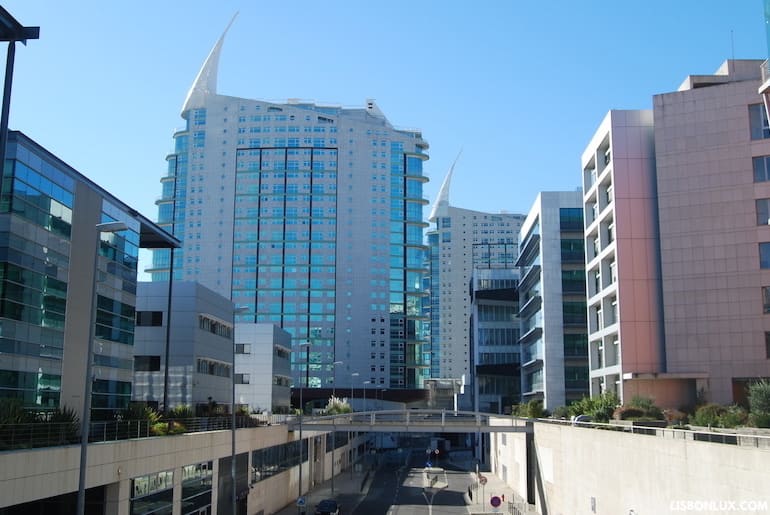
São Grabriel and São Rafael Towers
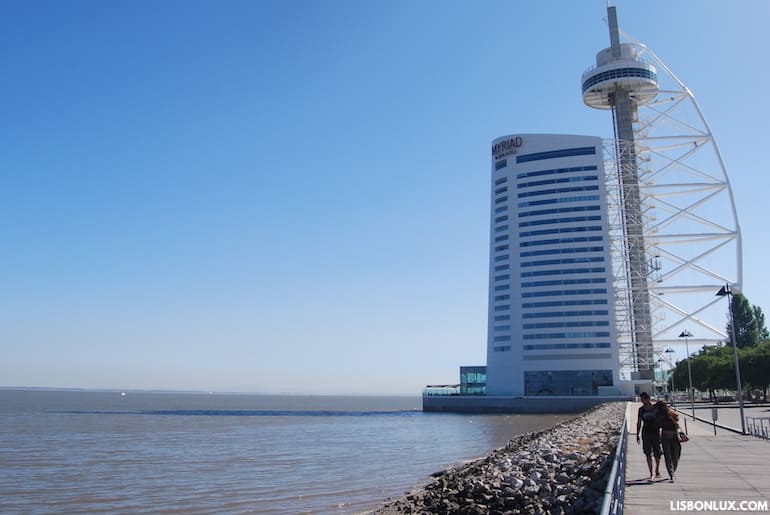
Vasco da Gama Tower
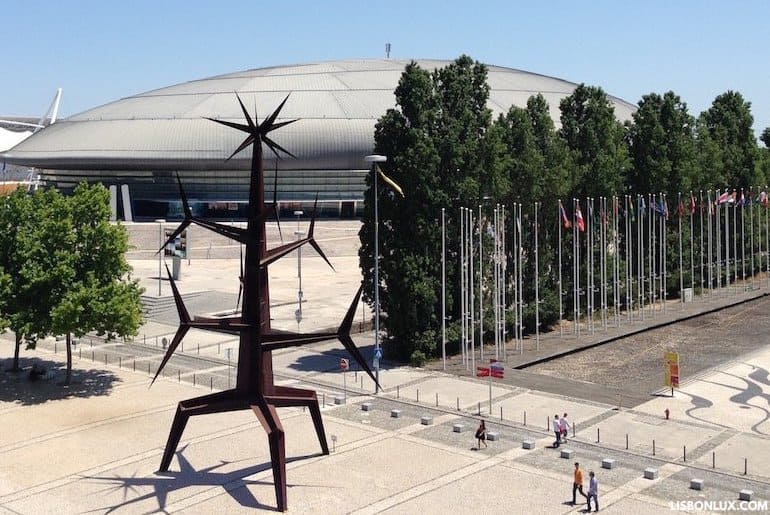
Altice Arena
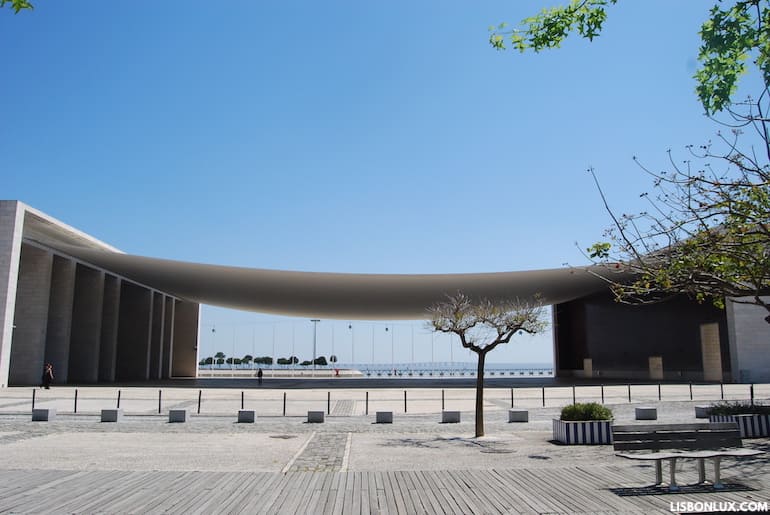
Portugal Pavilion
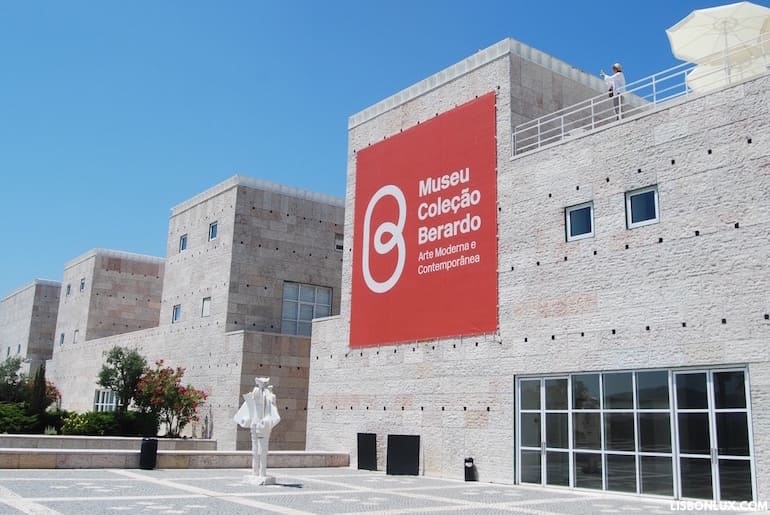
Belém Cultural Center
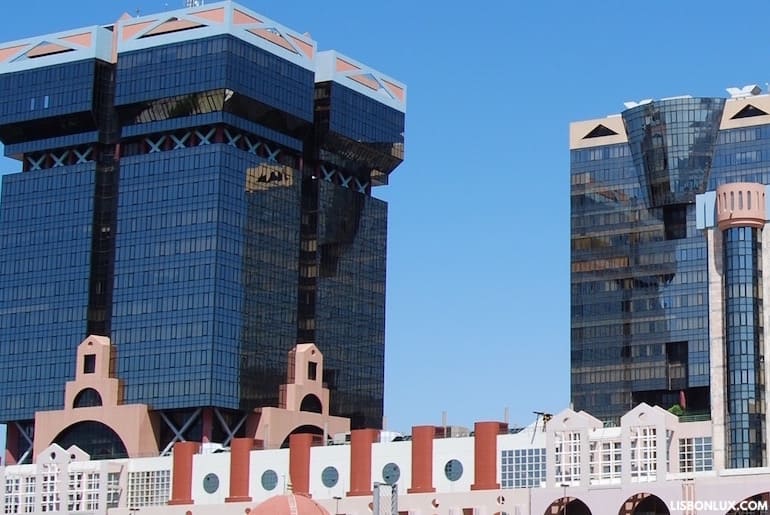
Amoreiras Towers
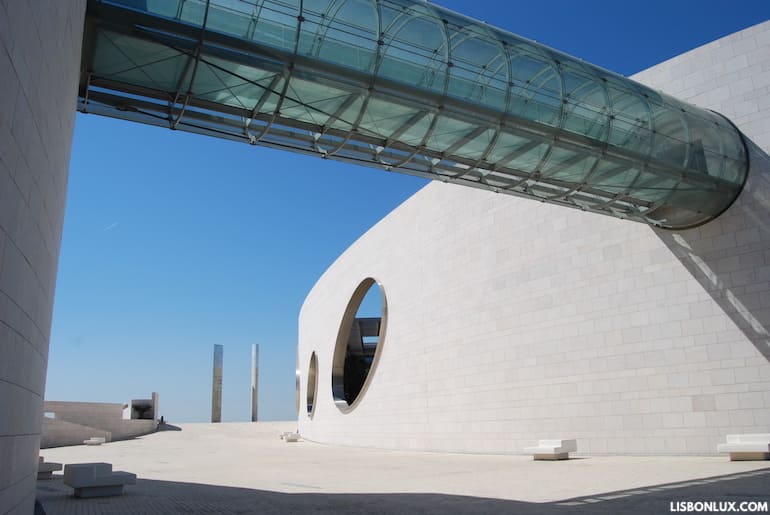
Champalimaud Foundation
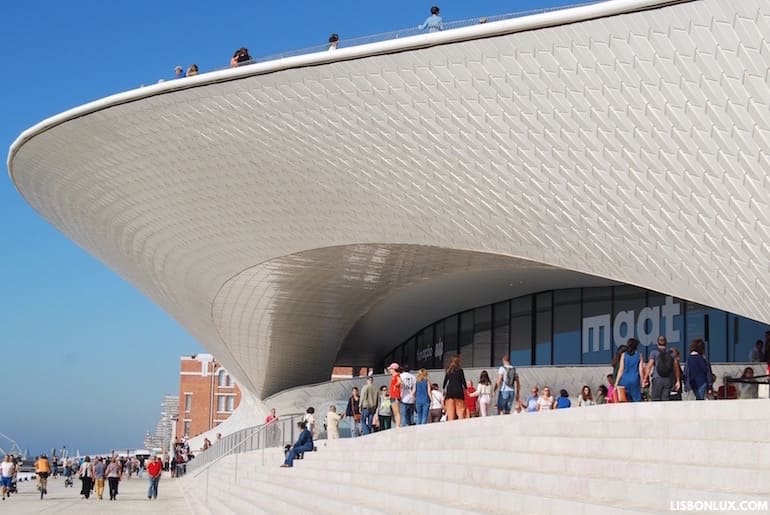
MAAT
The first great example of contemporary architecture in Lisbon was the building of the Calouste Gulbenkian Foundation , a concrete structure declared a national monument in 2010. It's surrounded by pleasant gardens by Gonçalo Ribeiro Telles, Portugal's best-known landscape architect.
Another great cultural institution, the CCB (Belém Cultural Center), has a pink stone exterior that initially caused great controversy due to its location next to the Jerónimos Monastery. Also controversial had been the Amoreiras towers in the 1980s, for their colossal post-modern style.
The World Fair in 1998 upgraded the western zone of the city with modern architecture, and the most notable examples are the Vasco da Gama Tower, Siza Vieira's Portugal Pavilion and Santiago Calatrava's Oriente Station .
Even more recent is the building of the Champalimaud Foundation , not far from the Belém Tower, and the MAAT , also in Belém.
